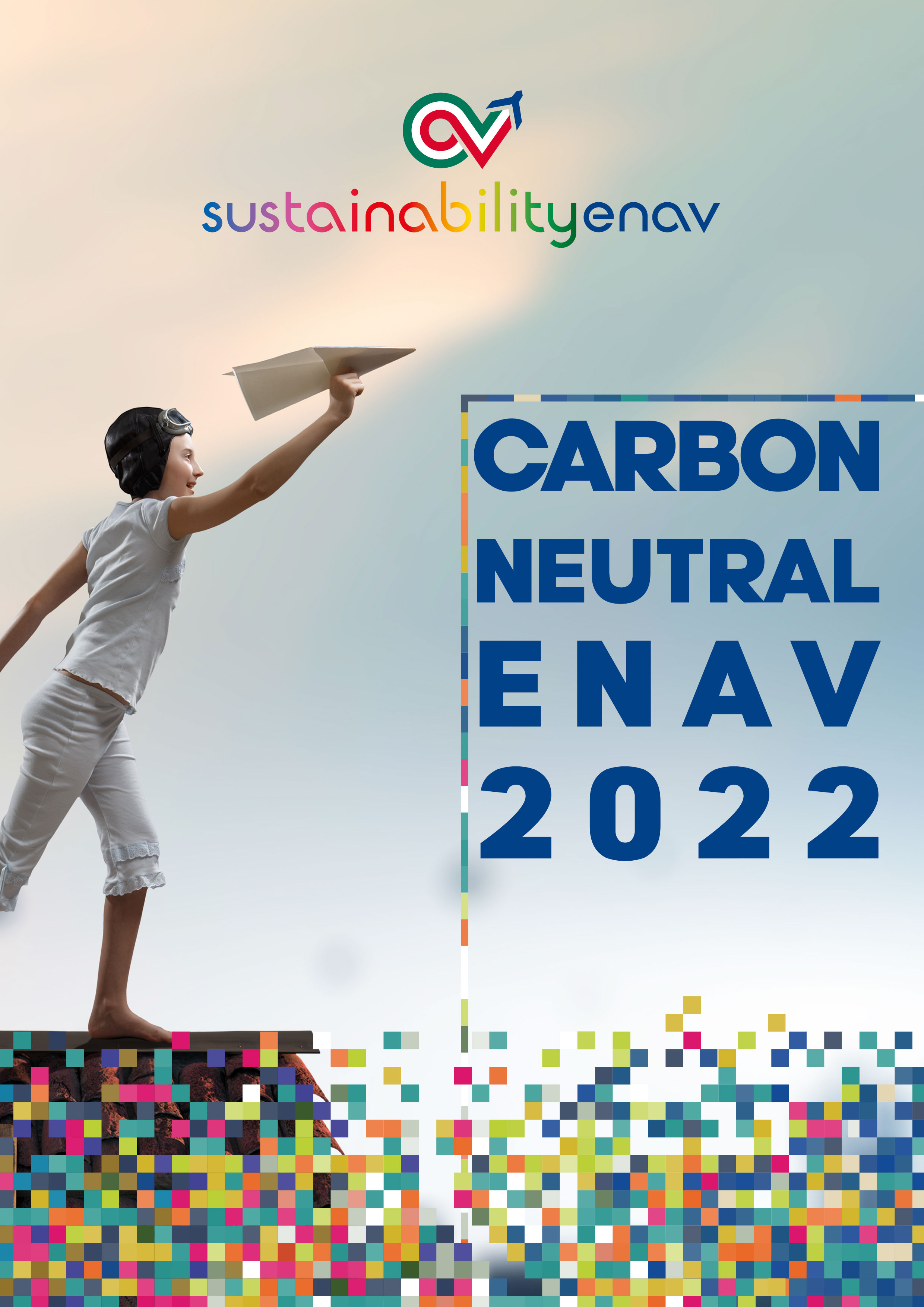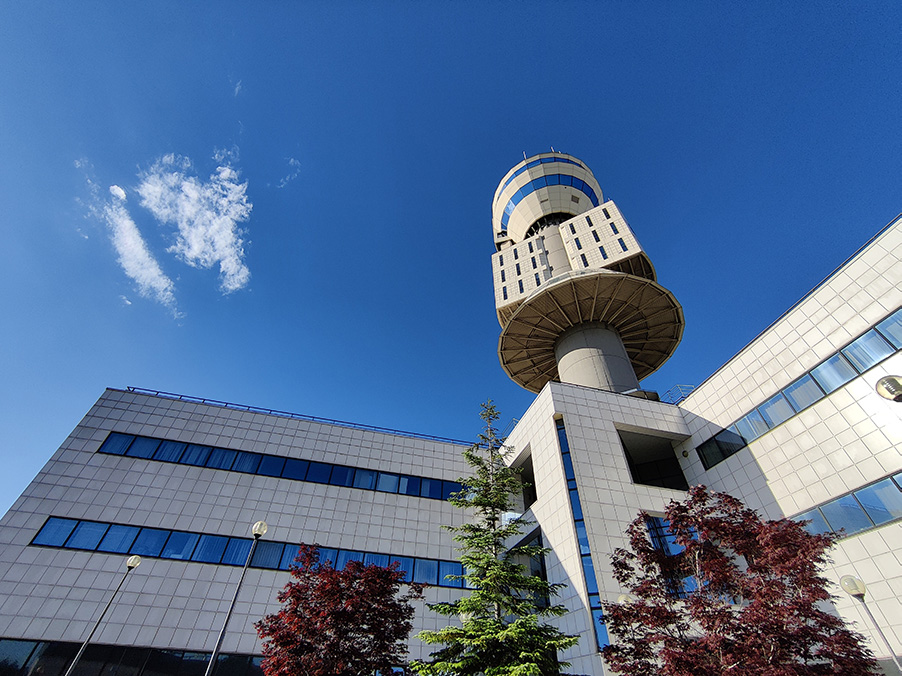Knowing our impact on the environment was a first step in learning how to protect it
Projects such as Free Route, launched by ENAV as the first ANSP in Europe in December 2016, or A-CDM (Airport Collaborative Decision Making), enable carriers to adopt innovative solutions to achieve a significant reduction of their carbon footprint.
In the light of the commitment devoted to our customers in recent years and also in consideration of the growing attention paid by national and international institutions to initiatives aimed at combating climate change, in 2020 the ENAV Group decided to redouble its efforts and determination in addressing the aims of SDG 13: Climate Action.
In this context, although the innate characteristics of ENAV mean that the Company does not cause any major environmental impacts, in order to send a clear signal to the entire air traffic sector and beyond, we have embarked on an ambitious plan to reduce our emissions. As a result, an action plan has been elaborated that in 2022 led us to carbon neutrality.

Environmental policy
We have prepared an Environmental Policy for Group Companies, available on the corporate website, in line with the corporate aims and designed to consider the environmental risks and opportunities connected to our operating activities, in compliance with international, Community and national legislation, in order to pursue our primary objective of creating sustainable value while respecting our stakeholders. In particular, the Policy's main strategic objectives include: CO₂ emissions reduction, rational use of energy, correct management of waste, monitoring of wastewater discharges. Members of the Top Management are responsible for disseminating and promoting the sharing and understanding of the aforementioned Group Policy and has dedicated corporate structures to manage and supervise these issues.

Environmental Management System
With reference to the ENAV Group Environmental Policy, we have implemented a specific Environmental Management System for the Group companies, with the aim of analysing and improving the environmental performance of our operations and services. Among the key goals of the EMS is that of reducing the risk of negative environmental impacts and the possibility of shaping improvement objectives in support of sustainable development. The international standard used as a benchmark in this process is ISO 14001. In the framework of the Integrated EMS project, we also embarked on the preparation of an environmental analysis in relation to the activities of ENAV, Techno Sky and IDS AirNav, with the impacts identified to be subsequently evaluated to establish their significance.
Finally, the system of responsibilities and delegations employed to assign powers and specific duties in relation to environmental protection was updated to September 2020. These environmental officers are required to periodically report on their efforts to their superiors.
In 2020, 2021, 2022 and 2023, there were not any monetary or non-monetary sanctions received due to the violation of laws and regulations regarding environmental issues.
Environmental Management System processes
There follows a brief description of the main processes that make up the Environmental Management System:
The aim of this process is to perform overall assessment of environmental issues, their effects, and the environmental performances related to the activities and services carried out in the sites where Group companies conduct their operations. The process is designed to assist the definition of the characteristics of the environmental management system.
The aim of this process is to identify the environmental aspects and impacts associated with Group companies’ activities and services, that the companies themselves can control (direct aspects) or merely influence (indirect aspects), in order to evaluate their significance in normal, abnormal, and emergency operating conditions. Environmental aspects can result in risks and opportunities associated with negative or positive environmental impacts.
The process defines the methods to be used by Group companies in relation to:
- identification, access, applicability verification, preservation, and updating of conformity obligations;
- the diffusion of environmental conformity obligations applicable to all the activities carried out by the Group companies.
The process is aimed at establishing training requirements in relation to the environmental aspects associated with the activities/services provided by Group companies and at guaranteeing adequate skills of the people responsible for work activities that can affect environmental performance, and the ability to comply with the applicable conformity obligations.
The process defines the methods adopted by the Group to manage the following activities:
- monitoring of environmental performance and the state of conformity in context of the EMS;
- communication, reporting to senior management and Governing Bodies.
The process is aimed at managing environmental compliance in the planning and operational phases, in relation to the wastewater and stormwater discharges, including the related purification treatments, and plants with “sealed collection tanks”, associated with ENAV's own infrastructure or third party infrastructure leased by ENAV, and also wastewater discharges to third party sewer networks and the associated purification treatments.
The process is aimed at managing hazardous and non-hazardous special waste produced by ENAV Group companies in all their facilities and sites; specifically, waste produced:
- in the context of their operating activities or provision of services;
- by equipment/systems installation activities, or by works or services outsourced to third parties
- in the context of maintenance and/or installation of systems/equipment by Techno Sky, e.g. for the air traffic control service
The process of identifying compliance and the necessary prescriptions in order to reduce fluorinated greenhouse gas emissions, in the context of activities of installation, operation and maintenance, dismantling, etc. carried out by Techno Sky, either directly or using technical personnel of external companies, on equipment containing fluorinated greenhouse gases (F-gas).
